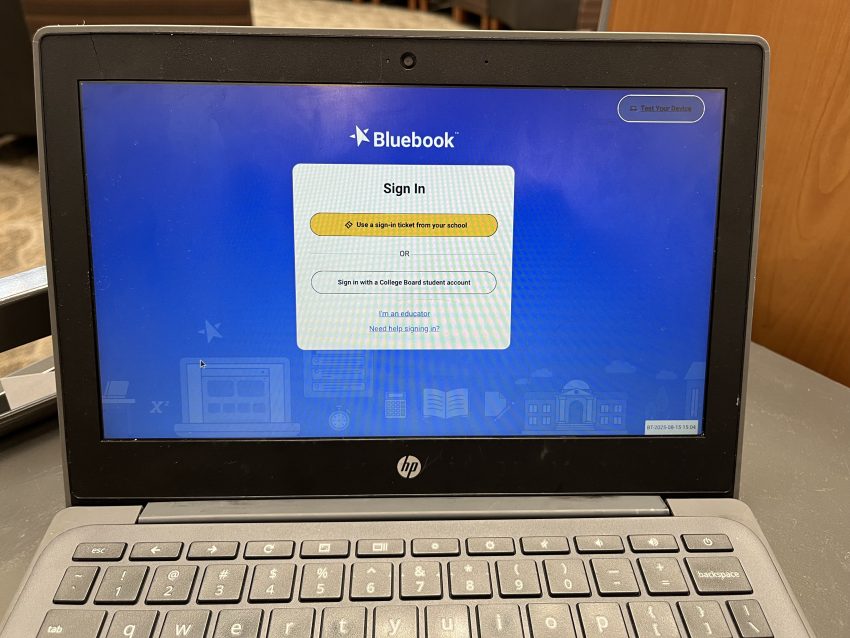Audrey Wu ‘28
EE Staff Writer
The PSATs (Preliminary Scholastic Aptitude Test) or the NMSQT National Merit Scholarship Qualifying Test), are a national test administered to 10th and 11th graders by the College Board. While most schools across the country only administer the test to 11th graders, Trumbull High School sophomores are required to take the PSAT for both practice and for an early introduction to the test. PSAT scores are not seen by college admissions offices, but instead are primarily used for scholarship qualification. The PSAT will be administered digitally through Bluebook on October 8th, 2025 this school year.
For juniors, the PSAT is especially important for academic scholarships and merits, as well as being an excellent opportunity to practice for the SAT. According to College Board, juniors who take the PSAT are automatically entered into the National Merit Scholarship Program, a high distinction that is appealing to college admissions. After a student takes the test, their Selection Index Score is calculated by doubling the student’s Reading and Writing scores and adding it to their Math Score. Scores range from 48 to 228.
Commended Students are typically the top 3rd to 4th percentile of the nation. Scores for Commended Students vary annually but generally range from 207-209. Semifinalists are typically the top 1% of 11th graders in the nation. The Connecticut State cutoff for being considered a Semifinalist is around 221. To advance to a National Merit Finalist, students must submit the NMSA, or the National Merit Scholarship Application. This application includes information on a student’s academic performance, leadership activities, honors, and a personal essay. This is submitted at the beginning of senior year when schools notify those who have qualified as semifinalists. Students can earn various scholarships including NMSC Scholarships, which are funded by the National Merit Scholarship Program. Additionally, other scholarships may be offered based on potential fields a student may enter and college sponsored ones.
The PSAT takes 2 hours and 14 minutes, not including any breaks that may be provided. The breakdown is 64 minutes for the Reading and Writing portion of the test, and 70 minutes for the Math portion of the test.
The Reading and Writing portion of the PSAT consists of 54 questions that are divided between 2 modules. Exam questions assess 4 main skills: Craft and Structure, Information and Ideas, Standard English Conventions, and Expression of Ideas. Craft and Structure primarily evaluates vocabulary, comprehension skills, and text analysis. The Information and Ideas portion focuses on evaluation of text, locating skills, and interpretation. Standard English Conventions emphasizes on editing text and knowledge of grammar rules and mechanics. Lastly, Expression of Ideas involves revision and editing of texts in order to make the text more fluent, accurate, and effective.
Similarly, the Math section of the PSAT consists of 44 questions that are divided between 2 modules. The questions in this section are either multiple choice or response questions. Questions topics include Algebra, Advanced Math, Problem-Solving and Data Analysis, and Geometry and Trigonometry. According to College Board, Algebra tests ability to solve, analyze, and create linear inequalities, equations, and functions. Advanced Math evaluates understanding of “absolute value, quadratic, exponential, polynomial, rational, radical, and other nonlinear equations”. Problem Solving and Data Analysis generally focuses on relationships, ratios, and rates. Lastly, Geometry and Trigonometry includes questions testing knowledge of angles, area, volume, and circles.
Students are required to bring a fully charged computer or chromebook with the Bluebook app installed in the device. Scratch paper is provided for student’s use and a calculator is provided through Bluebook. Additionally, it is recommended to get a full night’s sleep and eat a nutritious breakfast prior to taking the PSAT.
There are many ways for students to prepare and practice for the PSAT. Khan Academy and the Bluebook App provide many digital resources and tests to assist students to enhance subject matter proficiency and confidence in testing. There are also many preparation books available both digitally and physically for student’s use. In addition, starting early practice is extremely helpful and important. It allows students sufficient time to study and focus on weak areas. Most importantly, students should break the test into portions and practice the required skills.
Overall, the PSAT is more than just a practice test, it is an invaluable resource for both sophomores and juniors. By allowing students to practice and identify areas of strength and improvement, the PSAT opens doors and opportunities for students to access merit based scholarship and feedback on college readiness. By preparing in advance through resources and practice, students can perform with confidence and capability. For more information on the PSAT, students and parents can refer to the Bluebook website.

